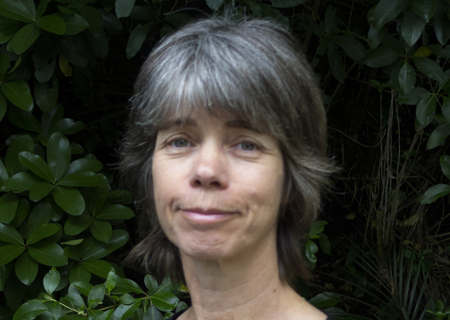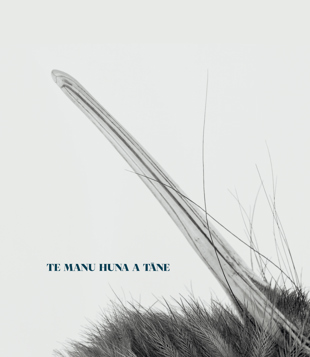Q1: Your images document a unique wānanga in the north, in which women came together to learn how to pelt kiwi for their feathers for weaving. The insights into Māori cultural practices and knowledge is both rare and unique. How did you come to be involved in documenting the wananga?
The wānanga was held at the home of Raewyn Ormsby-Rihari and Hugh Rihari (kaumātua of Ngāti Torehina ki Matakā). Raewyn is the mother of my partner, Eugene, so we visit them most summers with our two children. Raewyn asked me to photograph the wānanga for her. She knew that I had trained as a photographer and I’m always taking holiday snaps up there. I had previously taken photos for her of some of her weaving and of her wedding when she and Hugh married.
Q2: It must have felt like a real privilege.
Yes, absoutely. I knew I was recording something special that most people wouldn’t have access to, and taking the photographs allowed me to be included. I also feel privileged being able to work on this book with Hugh, Raewyn and the other writers. I’m grateful to have been able to gain insight into the tikanga and kaitiakitanga of kiwi from a diverse and interesting range of perspectives. As an artist I am interested in humankind’s relationship with animals and our place in the natural world, so this experience really resonated for me.
Q3: And also a privilege to be close to these special birds?
I have heard kiwi calling at night when we have visited Northland but I have never seen them in their natural habitat — my experience of live kiwi has been through thick glass in darkened zoo enclosures, so it was thrilling to be able to be so close to them, to really study them, and to get a physical sense of them. Having said that, it was alarming to realise how vunerable kiwi are, how many of them are harmed by dogs or accidentally killed by vehicles — to see a freezer full of them.
Q4: Was it difficult not to be intrusive as the photographer?
I had met the wāhine involved in the wānanga several times over the years so they knew me as Eugene’s partner, and I was documenting the wānanga for Raewyn, Hugh and Tiwai. That shifted the dynamic for me as the photographer. I felt quite comfortable taking the photos because the images weren’t for me, they were for the hapū. I also used a small camera so I was able to lean in to photograph details without getting in the way.
Q5: The photos are confronting — after all, these manu are dead and they are a taonga. But you capture a stillness and a tenderness in their handling. Did it strike you that way at the time?
At the time I was very conscious of the care and respect shown to the kiwi as taonga. They weren’t being skinned as a food source, it was to preserve their pelts to be used in the future for kahu kiwi. The reverance shown was mixed with a very practical sense of purpose typical of rural New Zealand — there were skills to learn, a job to do. I was also aware of the quiet, collaborative mentoring that I know is core to mātaurunga Māori. Having viewed the photographs, Cassandra Barnett very astutely articulated the tone of the wānanga. Her text in the book is a great reflection of what I felt when taking the photos, and how I’ve come to understand them since then.
Q6: What sort of camera do you use and how do you work?
I would normally use a 35mm DSLR camera for a documentary project such as this one. But for these photographs I used a Lumix DMC-LX5 — a reasonably good quality digital snapshot camera that I had taken on my summer holiday. It captures Camera Raw files and has a good quality built-in Leica lens. The Lumix was actually perfect for this situation — it meant I could move around easily and people were quite relaxed around the camera.
Q7: The essays by both the weavers and local Department of Conservation staff show that the relationship between them is very positive. Would you agree?
Yes, there does seem to be mutual respect, a friendly working relationship and a willingness to learn from each other. They share a long-held commitment to the protection of our natural resources, and for finding practical solutions. The wānanga are clearly a collaboration between them.
Q8: Did you initially think that the images from that day might become part of a book?
No I didn’t. I took the photographs for Raewyn, gave her copies of the files, then put them aside for a year or so. I’m the photographer, but I don’t see them as my photographs — they belong to Ngāti Torehina ki Matakā. It was only when I became aware of Creative New Zealand Suffrage 125 funding that I asked Raewyn and Tiwai if they would like to work on a book with me. A book seemed the perfect way to give context to the images. Raewyn and Tiwai were able to decribe the wānanga and how it came about. Rolien and Cinzia provided information about the ongoing conservation work they are engaged in as DOC staff. Toi, as a much revered kaiwhatu, wrote about the revival of traditional weaving; and Cassandra and Matariki gave contemporary urban Māori responses.
Q9: What’s one new thing you learnt while working on this book?
Kiwi are very familiar, but quite an abstract idea for me. They have always been rare in my lifetime. Experiencing them as actual physical beings, that live and die, changed my sense of our country and the natural world that we inhabit. It re-set my world view. I now have a much richer understanding of mana wāhine, mātauranga Māori and kaitiakitanga, and the lived complexities of biculturalism beyond my own environment at a university. I still have much to learn.
Q10: What would you like people to take away from reading it and studying the images?
That life is wonderfully layered and complex and there are all sorts of fascinating things quietly taking place outside our own daily experience. But more specifically, I hope readers consider their commitment to the ecological concerns we are all facing by being reminded of what will be lost, and how privileged we are in Aotearoa to have mātauranga Māori embedded here, with values that are the antithesis of global capitalist culture.


